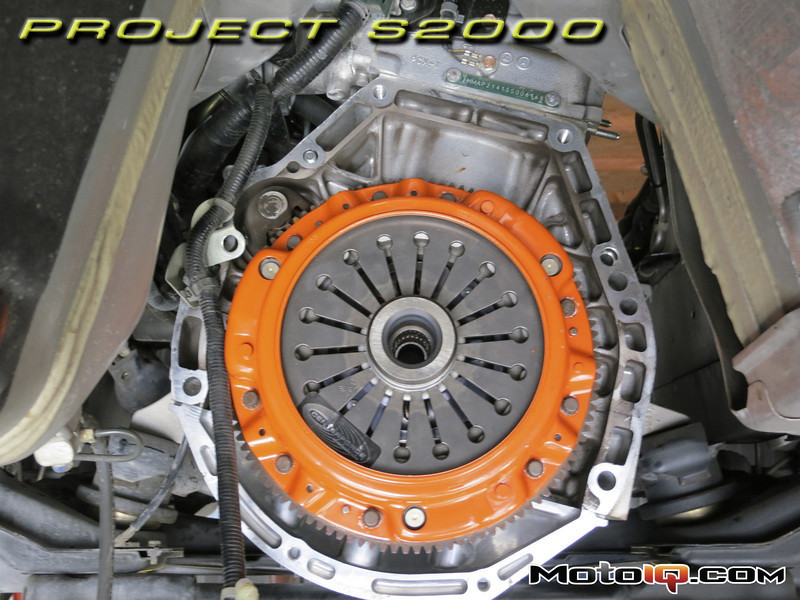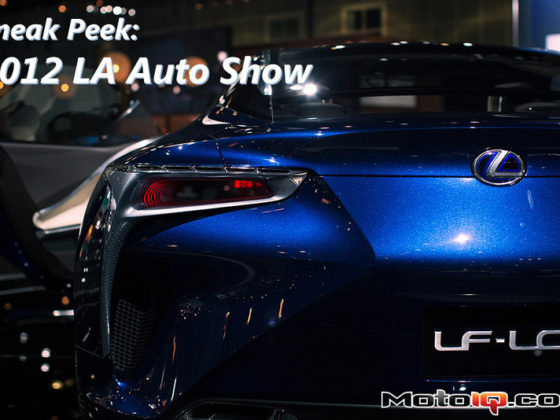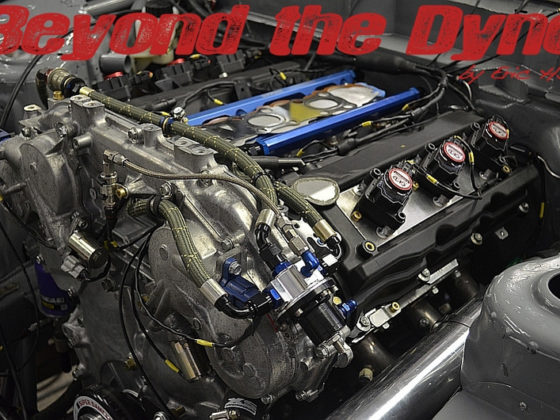 |
Project S2000 – Making a More Responsive Drivetrain
By Khiem Dinh
Khiem Dinh is an engineer for Honeywell Turbo Technologies at the time of this writing. All statements and opinions expressed by Khiem Dinh are solely those of Khiem Dinh and not reflective of Honeywell Turbo Technologies.
The AP2 generation of S2000s were made a bit cushier and street friendly compared to the AP1s for the general American consumer. A larger displacement engine along with shorter gearing were specified to give more torque at the wheels which Americans desired. However, Honda also matched a heavier flywheel and modified the clutch system with both negatively impacting the level of track aptitude. Step 2 of Phase 2 is to shift the drivetrain bias more towards the track side of the equation compromising some everyday livability for better performance.
A weak spot of the AP2 drivetrain is the stock clutch. Part of the weakness is the clutch itself; hey, it’s a Honda, it doesn’t exactly make a lot of torque. The other part of the weakness is due to a clutch release delay valve integrated into the slave cylinder. When the S2000 first came out (the AP1 generation), it became an instant favorite out on the auto-x circuit in stock class. In stock class, the car must be mostly stock but you can run very high grip slicks such as Hoosiers. Well, 9000rpm clutch drops on slicks destroyed many a differential.
Honda got smart, like Mitsubishi with the 2005 Evo, and installed a clutch release delay valve so that it didn’t allow the clutch to be dropped which reduced the shock on the drivetrain; Mitsubishi was doing a LOT of clutch warranty work on the 2003 Evos as the owners were doing clutch drops at redline launching the cars. On the 2005 model year, they introduced the clutch delay valve along with a 5000rpm limiter when in neutral. Anyway, back to the S2000.
On the racetrack, the relatively weak clutch combined with the release delay valve can cause clutch slip on a fast shift in the higher gears. I noticed this when I tracked the car at Buttonwillow. I noticed a little slip a few times on the 3-4 shift. Once on the 4-5 shift, the clutch slipped completely and the engine rpms just shot to redline. I had to back off the throttle completely to allow the clutch to grab.
 |
 |
My solution to this issue is to upgrade the clutch to a Centerforce Dual Friction. I decided to leave in the delay valve as it does make starting on hills a little easier and there are some pretty steep hills where I live. If you decide to get rid of the delay valve, you can either modify your AP2 slave cylinder or just use an AP1 slave cylinder.
 |
| My 64k mile stock clutch is on the left with the Centerforce on the right. There was actually quite a lot of meat left on the stock disc and I think it would have gone to 100k miles without issue. The Centerforce disc looks pretty much exactly like the stock disc which should bode well for reliability. |
In Centerforce’s family of clutches, the Dual Friction is the best compromise for a street driven and tracked vehicle. The Centerforce I and II level clutches are the two levels with a greater street bias as compared to the Dual Friction and are intended to be more OEM replacement. The Dual Friction trades a bit of longevity, pedal effort, and clutch engagement smoothness for increased holding capacity.
Having put some break-in miles on the Dual Friction, I can tell you right now that I would not be able to differentiate the feel and engagement of it compared to stock. I kid you not, the pedal effort and smoothness of engagement are like stock which was a big surprise to me. On my old Nissan SE-R, when I did a clutch upgrade, the pedal effort doubled so I was expecting increased effort here too.




2 comments
Came to this article as i was interested to see you’re confirmation of lightweight flywheel performance, i know it for myself after i did it and wow what a world of difference no other mod can replicate.
Interesting you noted noise introduced by the engine mounts. When i did mine in my drift spec BMW 328I i also noted this after doing engine/box/diff mounts all at once to fairly stiff aftermarket options, i thought i was off my rocker a little thinking the car under hard load sounded better but quickly confirmed this, I also enjoyed the mechanical feel of gearbox/diff spinning up you can now feel through your butt, real racecar stuff!
The engine mounts where one of the best mods for adding ‘feel’ to the car. Once I bumped the idle speed up 🙂 Love the improved shifter feel and the extra noise.